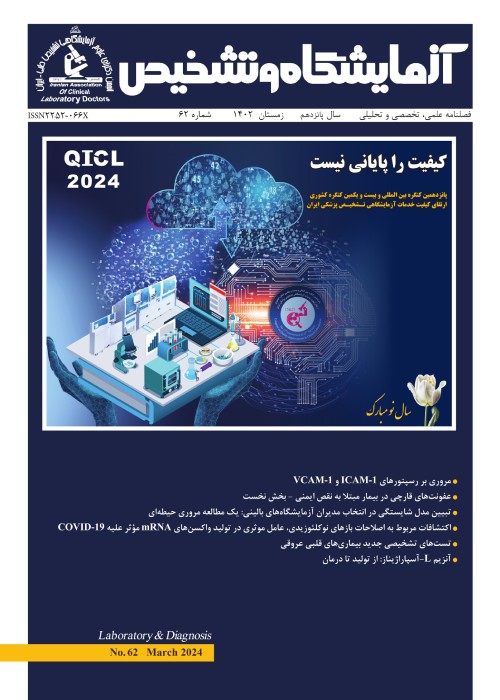Dematiaceous Fungi: Clinical Aspects - Mycetoma (6)
Author(s):
Abstract:
Mycetoma, also reffered to as Madura foot or Maduromycosis is a chronic infection involving cutaneous and subcutaneous tissues that is characterized by draining sinuses that extrude masses of the infecting organism termed granules, grains or sclerotia. Mycetoma may be caused either by a fungus (eumycotic mycetoma) or by aerobic actinomycetes (actinomycotic mycetoma),only the former will be disscusedin this manuscript.
Although cases of eumycotic mycetoma have been reported in essentially a worldwide distribution, infection rates are highest in tropical and subtropicalcountries.Particularly high rates are reported from the Sudan, India,Pakistan, Somalia, and parts of South America. The organisms responsible for causing disease can vary dramatically from region to region.Infection results from traumatic inoculation of soil fungi into the skin, usually with a thorn or other foreign object. Approximately 70 percent of mycetoma cases involve the foot and 15 percent affect hands, but any part of the body can be involved, this distribution reflects the relative frequency of trauma at these anatomic sites.
Patients usually present for medical attention months to years after the inciting traumatic event. The clinical hallmarks of mycetoma are swelling, draining sinuses, and granules, which are microcolonies of the etiologic agent that are extruded through the sinuses. The primary lesion consists of a small nontender subcutaneous nodule, which may develop up to years after the inciting traumatic event. The lesion gradually enlarges, becomes softer, and ruptures to the surface forming sinus tracts, while at the same time also spreading to simultaneously involve deeper tissues. Al least several monthes required for the formation of sinus tracts in eumycotic mycetoma.
An appropriate therapeutic approach requires that mycetoma be distinguished from botryomycosis (an infection process that may be clinically similar, that is caused by certain species of bacteria) and pseudomycetoma, an unusual form of dermatophyte infection. The differential diagnosis also may include sporotrichosis, chromoblastomycosis, and yaws, depending on the geographic location.
Although cases of eumycotic mycetoma have been reported in essentially a worldwide distribution, infection rates are highest in tropical and subtropicalcountries.Particularly high rates are reported from the Sudan, India,Pakistan, Somalia, and parts of South America. The organisms responsible for causing disease can vary dramatically from region to region.Infection results from traumatic inoculation of soil fungi into the skin, usually with a thorn or other foreign object. Approximately 70 percent of mycetoma cases involve the foot and 15 percent affect hands, but any part of the body can be involved, this distribution reflects the relative frequency of trauma at these anatomic sites.
Patients usually present for medical attention months to years after the inciting traumatic event. The clinical hallmarks of mycetoma are swelling, draining sinuses, and granules, which are microcolonies of the etiologic agent that are extruded through the sinuses. The primary lesion consists of a small nontender subcutaneous nodule, which may develop up to years after the inciting traumatic event. The lesion gradually enlarges, becomes softer, and ruptures to the surface forming sinus tracts, while at the same time also spreading to simultaneously involve deeper tissues. Al least several monthes required for the formation of sinus tracts in eumycotic mycetoma.
An appropriate therapeutic approach requires that mycetoma be distinguished from botryomycosis (an infection process that may be clinically similar, that is caused by certain species of bacteria) and pseudomycetoma, an unusual form of dermatophyte infection. The differential diagnosis also may include sporotrichosis, chromoblastomycosis, and yaws, depending on the geographic location.
Keywords:
Language:
Persian
Published:
فصلنامه آزمایشگاه و تشخیص, Volume:7 Issue: 30, 2016
Page:
35
magiran.com/p1509208
دانلود و مطالعه متن این مقاله با یکی از روشهای زیر امکان پذیر است:
اشتراک شخصی
با عضویت و پرداخت آنلاین حق اشتراک یکساله به مبلغ 1,390,000ريال میتوانید 70 عنوان مطلب دانلود کنید!
اشتراک سازمانی
به کتابخانه دانشگاه یا محل کار خود پیشنهاد کنید تا اشتراک سازمانی این پایگاه را برای دسترسی نامحدود همه کاربران به متن مطالب تهیه نمایند!
توجه!
- حق عضویت دریافتی صرف حمایت از نشریات عضو و نگهداری، تکمیل و توسعه مگیران میشود.
- پرداخت حق اشتراک و دانلود مقالات اجازه بازنشر آن در سایر رسانههای چاپی و دیجیتال را به کاربر نمیدهد.
In order to view content subscription is required
Personal subscription
Subscribe magiran.com for 70 € euros via PayPal and download 70 articles during a year.
Organization subscription
Please contact us to subscribe your university or library for unlimited access!


